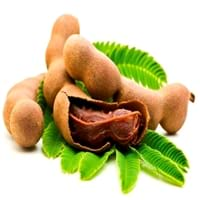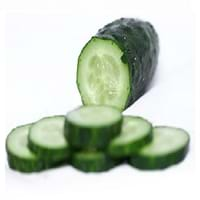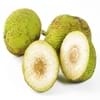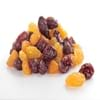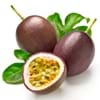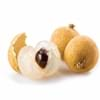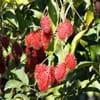Health Benefits
Boosts immune system, Boosts respiratory health, Cancer prevention, Digestive aid, Piles treatment
Arthritis treatment, Cancer prevention, Eczema treatment, Increases metabolic rate, Kidney stone treatment, Prevents constipation, Removes toxic metals, Treatment of alzheimer's disease
General Benefits
Beneficial in improving nerve function, Protects against parasites and worms, Relieves pain
Anti oxidant properties, Anti-inflammatory properties, Controls blood pressure, Digestive aid, Strengthens bones, Treatment of sore eyes
Skin Benefits
Anti-aging benefits, Brightens and lightens complexion, Exfoliates skin, Hydrates skin, Treatment of dark spots
Heals sunburn, Hydrates skin, Skin rejuvenation, Skin revitalization, Treatment of dark spots, Treatment of skin diseases
Hair Benefits
Prevents hair loss
Promotes longer and healthier hair, Protects hair, Regulates hair growth, Shiny hair
Allergy Symptoms
Abdominal pains, Breathing difficulty, Dizziness, Eczema, Fainting, Hives, Itching, Nasal congestion, Swelling of face, Tingling sensation in mouth, Vomiting
Breathing difficulty, Decrease in blood pressure, Diarrhea, Itching, Red rash, Runny nose, Sneezing, Vomiting, Watery eyes
Side Effects
Decrease in blood sugar levels, Induces acid reflux, Allergic reaction, Tooth decay, May form gallstones
Stressed heart, Irritation, Swelling, Swelling around mouth, Throat swelling, Tongue swelling, Strained blood vessels
Best Time to Eat
Along with meal, As a snack in the late afternoon, Don't consume at night and before bed, Strictly avoid empty stomach
Along with meal, As a snack in the late afternoon, Eat the fresh ones, avoid mixing with any other foods, don't eat after meal., Strictly avoid empty stomach
Vitamin B5 (Pantothenic Acid)
Vitamin C (Ascorbic Acid)
Vitamin K (Phyllochinone)
Calories in Fresh Fruit with Peel
-
Calories in Fresh Fruit without Peel
Calories in Frozen Form
-
Calories in Canned Form
-
-
Type
Tropical
Fruit vegetable, Melon
Season
Spring, Summer
Spring, Summer
Varieties
PKM 1, Urigam, Hasanur, Tumkur prathisthan, DTS 1 and Yogeshwari
Armenian, English, Garden, Kirby, Lemon and Persian
Color
Brown, Reddish-brown
Dark green, Green
Shape
Curving Cylinder
Cylindrical
Taste
Sour-Sweet
Juicy, Watery
Soil Type
Loam, Sandy, Sandy loam, Well-drained
Loam
Climatic Conditions
Humid to dry, Rainfall, Warm to hot climate
Warm
Facts about
- Tamarind is used to prevent body odor.
- African children use the tamarind seeds in games.
- No cases of tamarind toxicity or allergy reported till date.
- Outer waxy coating of cucumber can erase the pen writing.
- Pressing cucumber on roof of mouth for 30 sec will eliminate bad breath.
- It is made up of 96% water.
- English cucumber can grow longer than 2 feet.
Other Countries
Africa, Australia, Brazil, China, Mexico, Nigeria, Sudan, Taiwan
Egypt, Indonesia, Iran, Japan, Russia, Spain, Turkey, Ukraine, United States of America
Top Importer
United States of America
France
Top Exporter
Thailand
Spain
Botanical Name
Tamarindus indica
Cucumis sativus
Synonym
Tamarindo, tamarindus
-
Subkingdom
Tracheobionta
Tracheobionta
Division
Magnoliophyta
Magnoliophyta
Class
Liliopsida
Magnoliopsida
Subclass
Rosidae
Dillenhidae
Order
Fabales
Cucurbitales
Family
Fabaceae
Cucurbitaceae
Species
Tamarindus indica
C. sativus
Generic Group
Tamarind Sub
-
Difference Between Tamarind and Cucumber
We might think that Tamarind and Cucumber are similar with respect to nutritional value and health benefits. But the nutrient content of both fruits is different. Tamarind and Cucumber Facts such as their taste, shape, color, and size are also distinct. The difference between Tamarind and Cucumber is explained here.
The amount of calories in 100 gm of fresh Tamarind and Cucumber with peel is - and 15.00 kcal and the amount of calories without peel is 239.00 kcal and 12.00 kcal respectively. Thus, Tamarind and Cucumber belong to High Calorie Fruits and Low Calorie Fruits category.These fruits might or might not differ with respect to their scientific classification. The order of Tamarind and Cucumber is Fabales and Cucurbitales respectively. Tamarind belongs to Fabaceae family and Cucumber belongs to Cucurbitaceae family. Tamarind belongs to Tamarindus genus of Tamarindus indica species and Cucumber belongs to Cucumis genus of C. sativus species. Beings plants, both fruits belong to Plantae Kingdom.
